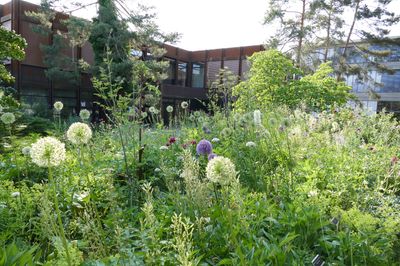URBAN ECOLOGYChristoph Küffer
Green cities and nature-based solutions have become central themes of architecture and territorial planning. In this course students learn the principles of ecology and evolution needed to understand the ecology of cities and urbanised areas. The course enables students to apply ecological thinking to urban design.
Students are introduced to the thinking of ecologists and the basic concepts of ecology and evolution to be able to approach design and planning questions from an ecological perspective and to interact with ecologists in interdisciplinary collaborations. The city is introduced as an ecological system and the key elements of urban ecology are discussed. The relevance of ecological and evolutionary processes and patterns for urban design and planning are discussed based on contemporary real-world examples. The intersections between ecological science and new philosophical concepts of relevance to urban design are explored, e.g. Anthropocene, biophilic design, species coexistence, and animal-aided design.
This course introduces students to the principles of ecology and evolution from genes to landscapes. Based on the fundamentals from ecological science and evolutionary biology we aim to understand the ecological characteristics of urban systems from city centres to metropolitan areas and across different land uses (agriculture, forestry, recreational, infrastructures, buildings, urban greenspaces). We will extensively discuss applications of ecological principles in urban planning and design projects, and highlight timely topics such as Anthropocene, biophilia, rhizomatous networks of plant roots and fungi hyphen, or wilderness vs. ecological design. The module is structured along five levels of biological organisation: genes and populations (evolution), physiology and adaptations, species interactions and communities (biodiversity), ecosystem ecology, and landscape ecology.
Introduction
Landscapes : Topology of ecological landscapes
Landscapes : Urbanised Landscapes
Physiology and Adaptation: What plants and animals do
Physiology and Adaptation: Multispecies Urban Design
Biodiversity, species communities and biotic interactions: Why biodiversity matters
Biodiversity, species communities and biotic interactions: Creating novel species communities
Ecosystem ecology and systems thinking : From nutrient cycling to the Gaia Hypothesis
Ecosystem ecology and systems thinking : Urban Ecosystems, metabolism and ecosystem services
Evolution, populations and genes : A quick introduction to rapid evolution
Evolution, populations and genes : Evolutionary processes inspire design thinking
